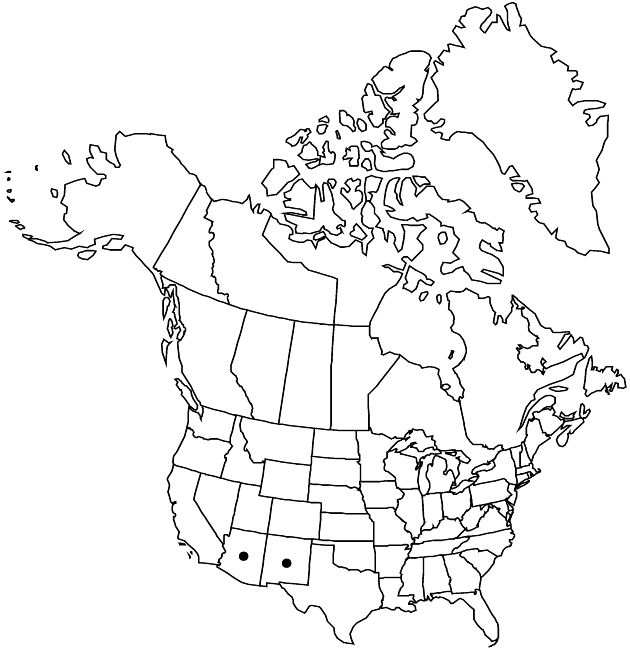Arida riparia
Sida 20: 1414. 2003.
Annuals, 25–60 cm; taproots slender to thick. Stems 1–12+, erect or ascending, straight and rigid, sometimes sprawling from base, branching from base and distally, glabrous, glaucous. Leaves mostly cauline; sessile (± appressed); blades oblanceolate, 20–30 × 3–5 mm, reduced distally, (thick, succulent) bases broadened, margins entire (incised to dentate in hybrids with A. parviflora) eciliate or with 1–8 cilia per side, apices linear, spiny-mucronate, glabrous; distal subulate, entire. Heads borne singly (terminal), often in loose, leafy, cymiform arrays. Involucres hemispheric, 10–12 × 10–16 mm (fresh). Phyllaries in 4–5 series, appressed, linear-lanceolate, 2–8 mm, bases whitish to tan, margins entire to laciniate, apices green, acute to acuminate, glabrous. Ray florets 50–80+; laminae bluish purple to lavender, 10–12 mm, coiled after flowering. Disc florets 45–100+; corollas yellow, 3.5–5 mm. Cypselae oblanceoloid, 2.5–3 mm, 11–13-nerved per face, faces sparsely sericeous; pappi: white, setose; ray 3–3.5 mm; disc 3–4 mm. 2n = 10.
Phenology: Flowering Apr–Sep.
Habitat: Low valleys, saline soils on mudflats, edges of playas
Elevation: 1300–1400 m
Distribution

Ariz., N.Mex., Mexico (Chihuahua, Coahuila, Durango, Zacatecas).
Discussion
Arida riparia is a distinctive species recognized by its V-shaped branching, narrow, succulent, somewhat appressed, spiny-tipped leaves, and relatively large heads. It is known to hybridize with A. parviflora in southeastern Arizona and adjacent New Mexico. Specimens with dentate leaf margins usually represent hybrids.
Selected References
None.